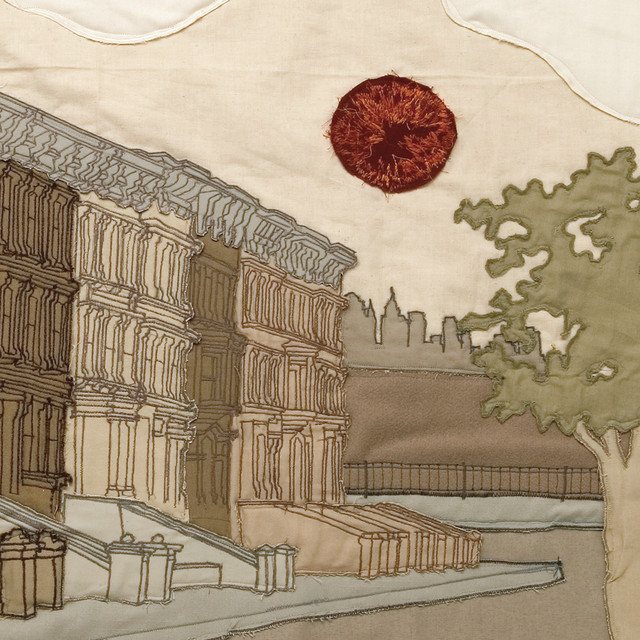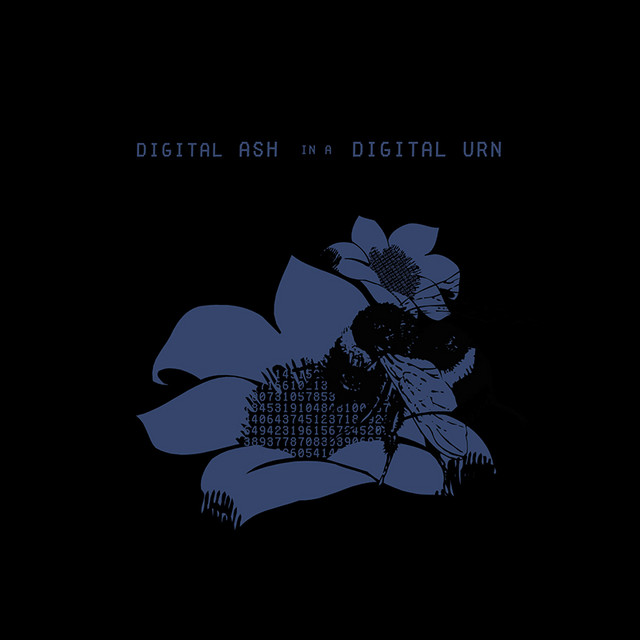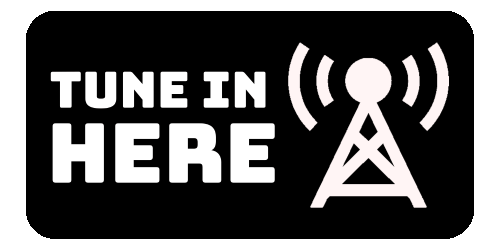

I'm Wide awake It's Morning
Digital Ash in a Digital Urn
Bright EYEs
2005 / Saddle Creek
Written by: Annabelle Hershelman | February 15th, 2025
On February 15th, 2005, 20 years ago today, Conor Oberst of Bright Eyes is poorly postured in a leather chair next to the host on The Late Late Show with Craig Ferguson in the first sit-down interview of his career, after his band’s performance of “Road to Joy” ended in Oberst smashing his guitar, and member Nate Walcott destroying his trumpet. Bringing to late-night television haywire noise during the climax of his album-ending epic, the band put forth his biting perspective that was motivated by the aughts political context of America under the presidency of George W. Bush. Airing out grievances with the state of the country during the era to talk-show audiences in this “Road to Joy” performance, the lyrics of the song cut deep and are exacerbated by the live punkish destruction of their instruments.
I’m Wide Awake, It’s Morning, the band’s sixth studio record, was released on January 25th, 2005, on the same day as the band’s seventh studio album, Digital Ash in a Digital Urn. Conor Oberst began Bright Eyes in 1995 in Omaha, Nebraska, as an outlet for his solo material he was writing at 14 years old. A decade later, the indie songwriting experimentation he fine-tuned through releases like Letting Off the Happiness in 1998 and Lifted or The Story Is in the Soil, Keep Your Ear to the Ground in 2002, the latter of the two giving the band unprecedented commercial success for themselves and their Omaha label, Saddle Creek Records, allowed for the sonic development of the two that came next. Among other American indie rock bands like Death Cab for Cutie, Rilo Kiley, and Modest Mouse, Bright Eyes also had entries in the music canon of one of the most popular teen dramas of the new millennia, The O.C., and the newfound consciousness of the band from the mainstream set a precedent for the type of success specifically I’m Wide Awake, It’s Morning would experience.
The second record that was released on that day, Digital Ash in a Digital Urn, was a different type of project for Oberst and Mike Mogis, his band member who took the helm of producing, as it featured electronica-flavored pop. From the get-go, this seventh studio album was going to be overshadowed by the folk-twinged Americana sound the other possesses, which was easily digestible and akin to their established sound. Saddle Creek Records planned two tours for both albums and before release, the singles “Lua” and “Take It Easy (Love Nothing)” held the top two spots on Billboard’s Hot 100 Singles Sales chart. The difference in response to I’m Wide Awake, It’s Morning versus Digital Ash in a Digital Urn was made apparent on these tours, as Oberst observed how there was a noticeable negative reaction among people attending the latter tour, perhaps wishing they were hearing the touchstone love song “First Day of My Life,” which was ‘pop enough’ to be able to be played in a Starbucks, instead of the repetitive feedback loops heard live. However, the legacy of this record has become rich with a gradual crescendo occurring of fans rediscovering the distortion-heavy project. There’s too much to pour over through the synth-pop sounds that rhythmically compliment Conor Oberst’s shaky vocals or bleak and shifting atmospheric tones to offset revelatory confessionals that profess love or lament one’s actions.
Although this record is a major sound shift for the band, there is already an obvious choice made with the opening track that has a feature in common with many a Bright Eyes record that came before. “Time Code” sets the tenor and is the type of song that drives away anyone closed off to experimentation. Oberst breathes heavily to a building ambiance until cryptic words tell you to truly listen, “Don’t talk.” Swarming voices of hectic streets are set to a crunching electronic percussion; it’s the overwhelming details of this record that surprisingly end up drawing you in, reminding you that you are not alone in having an uneasy mind. Oberst’s cynical view of love is introduced in track two of Digital Ash in a Digital Urn, “Gold Mine Gutted,” as he describes how easy it is to become trapped in one’s thoughts, ruining and running from what you have. “Arc of Time (Time Code)” places themes of self-frustration and references to the dressing in white of death to an upbeat programmed pattern with melodic hints of Wurlitzer piano notes.
The bona fide electro-pop song of the album is “Take It Easy (Love Nothing),” the fifth number that lyrically tracks the construction of an emotional barrier in the aftermath of short-term connection. The jingling inflections from the keyboard on the song explode like a repeating firework after each chorus line of detached proclamation. The programming of the song is done by Jimmy Tamborello of the Postal Service, setting the song apart from the rest of the lineup. The back half of the melancholic release contains a slew of deep cuts waiting to be inherited by explorative listeners, numbers like “Light Pollution” and “Ship in a Bottle,” the type never slated to make the greatest hits compilation. Closing is “Easy/Lucky/Free,” which features Nick Zinner of the rock band Yeah Yeah Yeahs contributing guitar, and has a music video with Conor Oberst featured alone, entering into an empty room, an outfit on of a t-shirt and long sleeve underneath that could inspire an ‘indie-cool’ rebel type like Jess Mariano of the Gilmore Girls context, to write the lyrics on a clear wall. As the band chose to unveil the two projects on the same day, this year marking the twentieth anniversary of those releases, this choice initially ended up relegating the more off-center Digital Ash in a Digital Urn to a B-side when instead, it predicted a future where the similar sounds of MGMT and LCD Soundsystem would define our contemporary era of indie music.
During that first sit-down interview on late-night television for Conor Oberst, after the instrument destruction from performing the closing grand track from I’m Wide Awake, It’s Morning, Craig Ferguson references how Oberst had been declared by the media as “the ‘new’ Bob Dylan.” The 2005 release of the sixth studio album would catapult the band into the mainstream milieu, inspiring music magazines to make brazen declarations like this. This popularity made the song “First Day of My Life” one of those that you find that you somehow know from simply being exposed to American culture and of a similar nature to songs like “Hey There Delilah” by the Plain White T’s, and Death Cab for Cutie’s “I Will Follow You Into the Dark,” also singles that same year.
A record bridging the gaps between alt-country, indie folk, pop, and Americana and destined for stardom, I’m Wide Awake, It’s Morning is the project Bright Eyes will continue to be recognized by. Oberst had been wearing his heart on his sleeve and putting it to paper for a decade before, but this is the culmination of the growth of that period, his voice presented with polish but worn in enough where his perspectives and political vexations still cut. In every track, the two elements are seamlessly woven together lyrically, in either an intimate setting with only Oberst and his guitar or a tight-knit band adding in the carefully placed components of pedal steel guitar, harmonica, trumpet, or organ keys.
To once again chase away those not open to an indie quality, as the band usually does with their full-length projects, the opening song is not the easiest to digest, at first at least. To continue to make this choice on a record that was anticipated to break through demonstrates their commitment to an independent ethos. “At the Bottom of Everything” is a contained version of this, but it is nevertheless an attempt as for the first minute and a half, Oberst delivers a monologue of a story between sips of whiskey from a coffee cup, of a mechanical failure of a plane when “one of the engines gave out, and they started just falling, thirty thousand feet…” until the song is set into motion by bright acoustic chords. This tone of folk-pop melody continues with an intro of the sliding of a steel guitar straight into the second track, “We Are Nowhere, and It’s Now,” the first song that features Emmylou Harris, the kind of classic country-rock voice in the Americana genre that Oberst had imagined harmonizing with his vocal. I’m Wide Awake, It’s Morning is unique for being a popular record that solely features Oberst’s close-knit circle, desiring a purely independent and organic method, and aside from the seventies icon herself, it was entirely that.
Oberst had moved to New York City at the beginning of 2003, and naturally, this sixth project was to be New York-centric, but it is also from the point of view of a Midwesterner learning the ropes and participating in the city protests going on against the Iraq War. “Lua” is set against this city backdrop, with the song depicting the shift between the energy of the night and the reality of the morning, perpetually with a cynic’s view of committal love. The second to last number, “Poison Oak,” on any other record, could have been a magnificent closer, as it is a tender ballad with a swelling zenith that captures the suffocating feeling of a tight chest. “Road to Joy” is the finale that gives I’m Wide Awake, It’s Morning this timeless status it experiences, frequently regarded in the two decades since its release as one of the best folk albums of all time. Tying together themes that run in conjunction throughout the record, of lyrical self-awareness and, especially here, of political frustration, the song is an unmistakable masterpiece.
The enduring legacy of Bright Eyes’ sixth and seventh studio album, both released on the same day on January 25th, 2005, can be felt through the fact that they are celebrating their twentieth anniversaries as critically acclaimed records this year and are definitive classics by the American indie rock band. I’m Wide Awake, It’s Morning, and Digital Ash in a Digital Urn earn and deserve their praise separately and respectively, and exhibit the quality songwriting of a band, and more specifically, one person who was able to express a unique personal era, through both electronic experimentation and quintessential acoustic musicianship, that listeners for decades will be able to connect with as listeners for the last two decades have been able to.
I'm Wide awake It's Morning
Highlights: Road to Joy, At the Bottom of Everything, We Are Nowhere and It’s Now
Lowest Points: Land Locked Blues
Digital Ash in a Digital Urn
Highlights: Take It Easy (Love Nothing), Easy/Lucky/Free, Gold Mine Gutted
Lowest Points: Ship in a Bottle, Theme to Piñata

